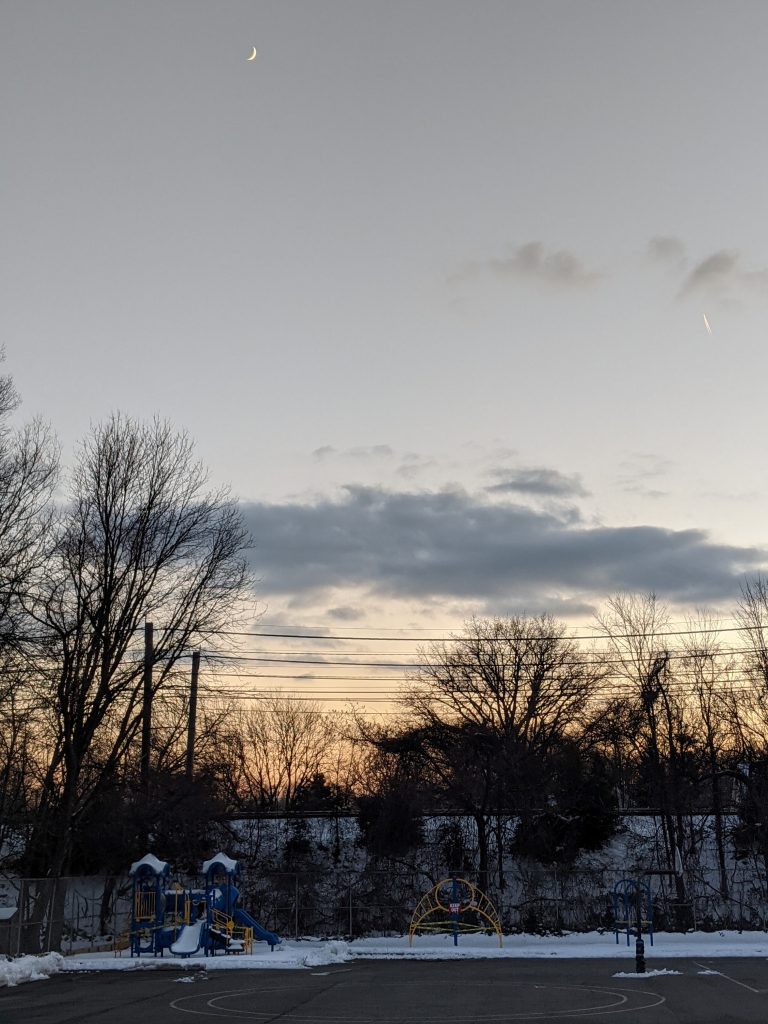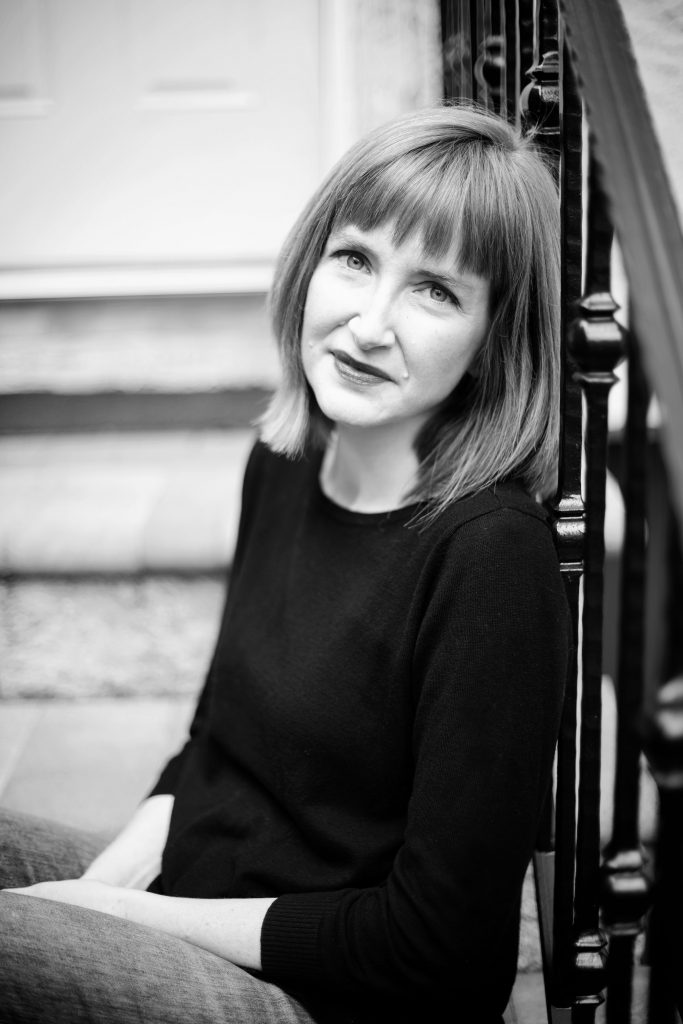The Up Drafts is an ongoing series of essays and interviews that examine creativity, productivity, writing process, and getting unstuck.
BY NANCY REDDY

For me, the energy of a new year isn’t about cleanses or exercise regimens or even resolutions. Instead, it always calls up my Platonic Ideal of January: the interlude between my first and second semesters of my MFA. Each day, I’d bundle up, layering tights under jeans and donning the puffy mittens and trapper hat my sister had bought me for Christmas as a kind of joke, and walk along the frozen pond to the coffee shop where I’d sit and write. I’d lived in the south for six years before moving to Madison for graduate school, and I was utterly unprepared for the rigors of winter in the upper Midwest. But I loved the transformation of that landscape in winter, the way snow fell and stayed all season, the lakes freezing solid until they heaved and cracked with spring thaw. On the coldest days, it hurt to breathe, but those were the sunniest days, too, mornings so cold they were cloudless.
I can’t remember which poems I wrote that January, or how many of them ultimately made it into my first book. What I remember about that time is the clarity of my intention. I wasn’t thinking yet about where I’d publish the poems or who would read them or what anyone would say on twitter. Instead, I walked to the coffee shop and got to work.
I’ve been thinking about that January recently because it feels so far from my life now. Like so many of us, I’ve spent most of the last year indoors with my family. When I sit down to write now, it’s at the same desk where I teach online and grade and anxiously read the news. And most of the time, as soon as I sit down, a small face pops in the door to register a grievance or request a snack or get a hug. By the afternoons, once my sons have been freed from zoom school and let loose with Minecraft and NerfDart Wars (I know, it’s not what I wanted my parenting to look like, either), my brain has turned to goo and the distractions of the world have gotten loud.
So as I’ve been preparing to relaunch The Up Drafts after its pandemic hiatus, this question of how we’re writing now has been at the front of my mind. When I pitched this series to PANK last January, I was feeling stuck in my own writing life. (And I was considering another kind of January energy, the public counting of accomplishments, though there’s been blessedly less of that this year.) The plan was to use the insights of experts from writing studies, creativity coaching, psychology, and other fields to provide strategies for getting unstuck. In that initial run, the series explored why done is better than good; considered speed, productivity, and freewriting in an interview with writing studies scholar Hannah J. Rule; argued for the magic of one thing, which I learned about in an interview with cartoonist and creative mentor Jessica Abel; and considered how the fragmented time of the early pandemic changed my writing process; and more, in the archives.
As we begin a new year and relaunch the series, I’d like to offer two ideas, both of which I’ll likely expand on in future columns: the power of little rituals and measurement for sustaining a writing practice.
An opening ritual tells your brain it’s time to start writing. Part of what was so magic about that January was that the ritual was built in: I’d walk and think about what I had written and what I was going to write, and then I’d order my coffee and sit down and begin. For right now, my ritual is simple: I write a note to myself about what I’m working on and why, then I open the sheet I’ve set up to track my work this year, then I start the clock on my computer that tracks my writing time each week. (One of my favorite parts of Charles DuHigg’s Smarter Better Faster is his explanation of how the why of your goals matters for your motivation; the section of this article that begins with the bold “To motivate yourself” does a decent job of paraphrasing it, though the whole book is a worthwhile read.) A ritual can be any small thing you do to tell yourself you’re getting to work. I have friends who’ve sworn by the magic of the same album or playlist on loop throughout a project like a talisman: you hear it, and your brain knows what you’re up to. Cal Newport writes a bit about rituals in Deep Work, and this post from his blog includes examples of rituals, if you’d like more ideas.
I’ll write more about tracking and measurement in the future, but for now, I’ll say that I’ve set up a couple simple systems, and I’m feeling really energized by it. The thing that finally tipped me over was a newsletter from Leigh Stein at the end of 2020, titled What Counts? As she described her approach to tracking her writing (and her finances and exercise and everything else, it seems), I realized something: I’d always understand tracking as a punitive practice, a way of conjuring a wagging finger to scold for not doing more or faster. But I could flip that: I could think of tracking instead as a way of defining what matters and measuring it to get more of it. So what I’ve done for this year is to set up a google sheet with two tabs, one with an entry for each day’s writing session, similar to what Leigh describes in this article, and a second I’m using to track submissions, applications, and pitches. I’m hoping that having some quantitative measures of my work will both motivate me to keep going and also help me to value how hard I am working, particularly in such a difficult time. (If you’re tracking your writing, I’d love to know how it works for you!)
In future columns, I’ll be exploring topics like writing with and through distraction, how audience and circulation shape writing process, how to make an at-home writing residency, and more. I’m setting up interviews with writers, researchers in writing studies and creativity and psychology, and more. It’s my goal for this column to explore problems we’re facing in our writing lives, from the practical (how do you write when there’s a kindergartener walking into your room for a hug every three minutes?) to the existential (does imagining how your work will be received help you finish it, or is it paralyzing to think about what people will say before you’ve even written it all?). I’m hoping that bringing in some experts from outside creative writing can help us think about these problems in a new light. I’d love to know what you’re looking for, and what you’d like to learn about.
For now, wherever you are in your writing life, let’s harness the rest of this good January energy. Let’s begin.

NANCY REDDY is the author of Double Jinx (Milkweed Editions, 2015), a 2014 winner of the National Poetry Series, and Acadiana (Black Lawrence Press, 2018). Her poems have appeared or are forthcoming in The Gettysburg Review, Pleiades, Blackbird, Colorado Review, The Iowa Review, Smartish Pace, and elsewhere, and her essays have appeared most recently in Electric Literature. The recipient of a Walter E. Dakin Fellowship from the Sewanee Writers’ Conference and grants from the New Jersey State Council on the Arts and the Sustainable Arts Foundation, she teaches writing at Stockton University. She’s working on a narrative nonfiction book about the trap of natural motherhood.
![[PANK]](https://pankmagazine.com/wp-content/themes/pank/assets/images/pank-logo-large.png)
